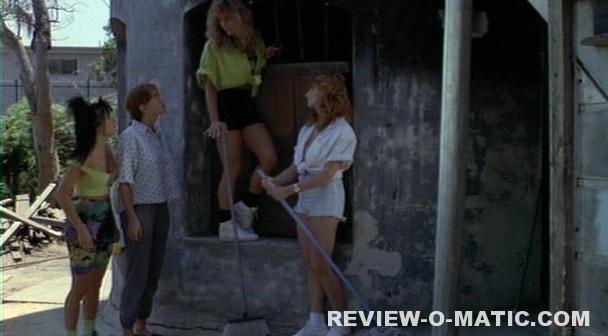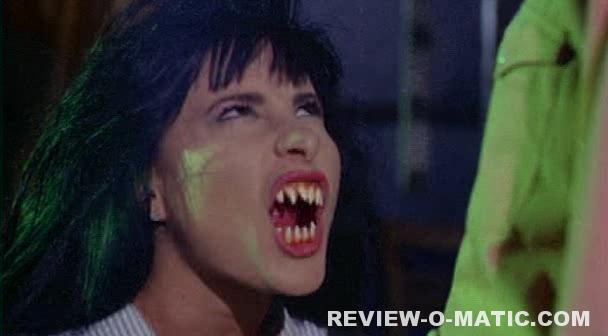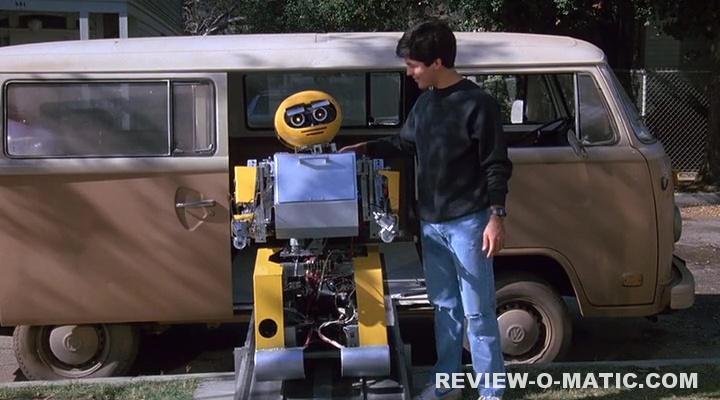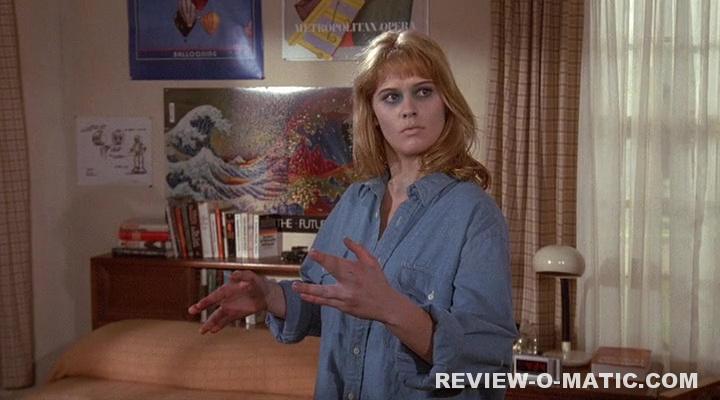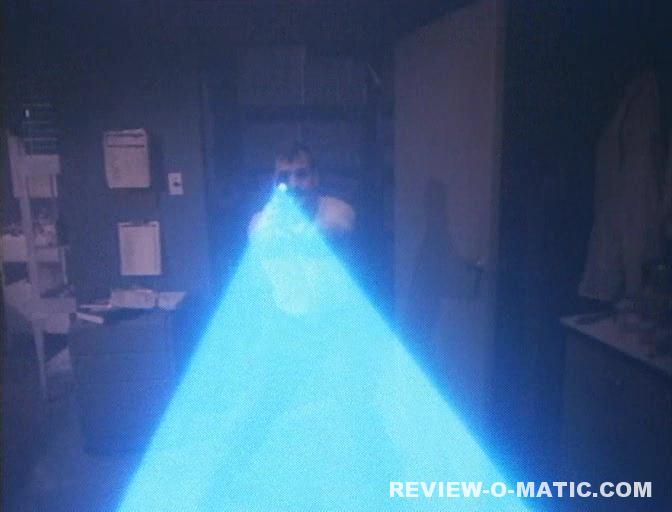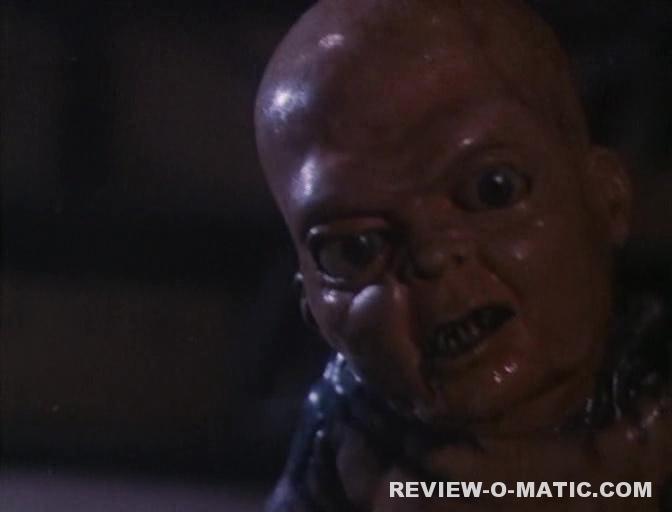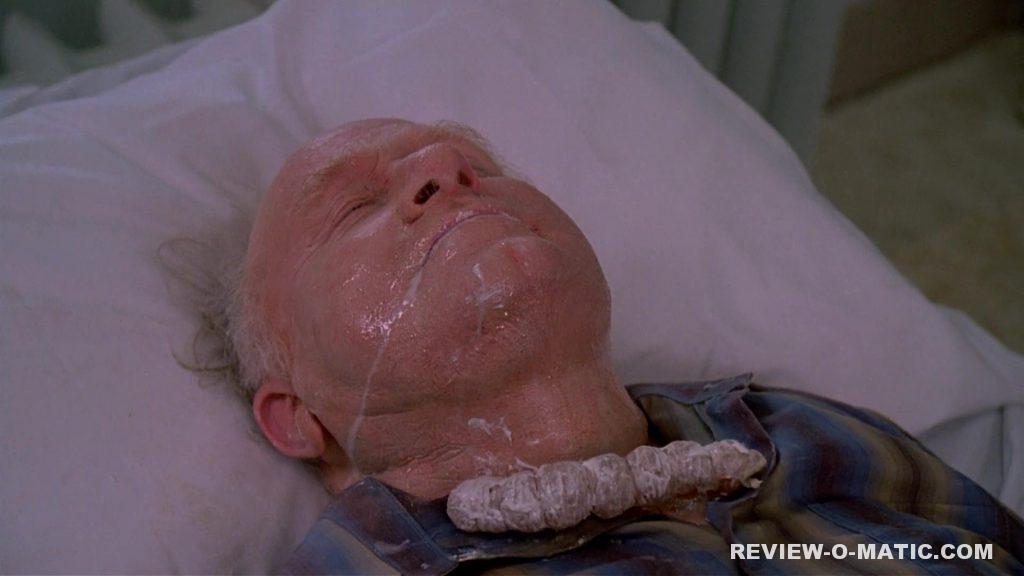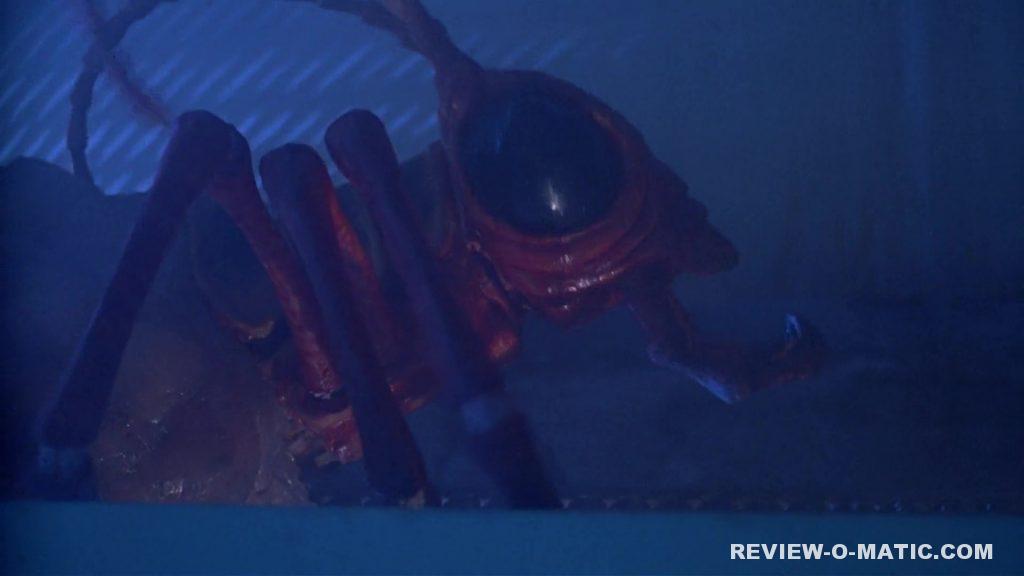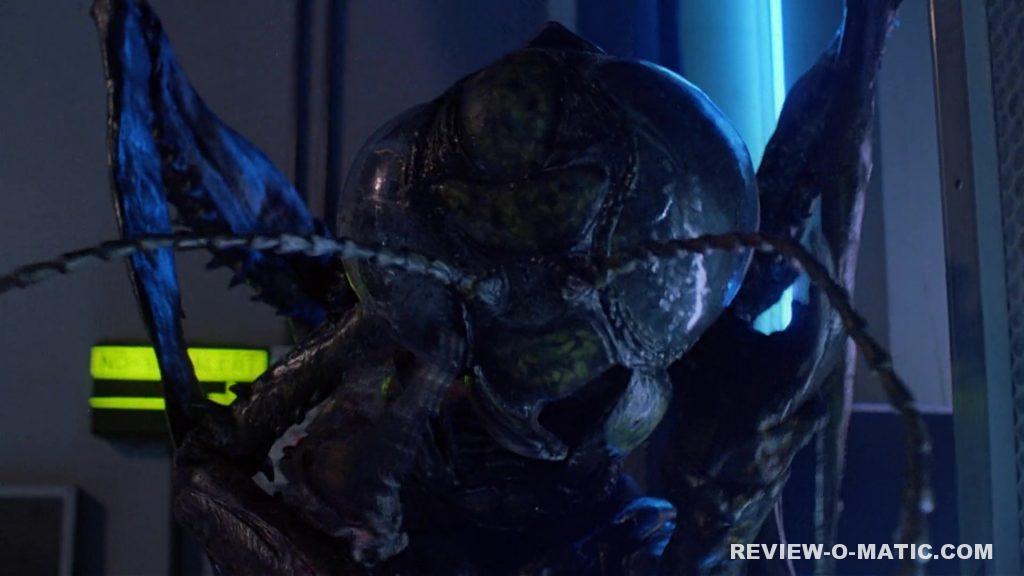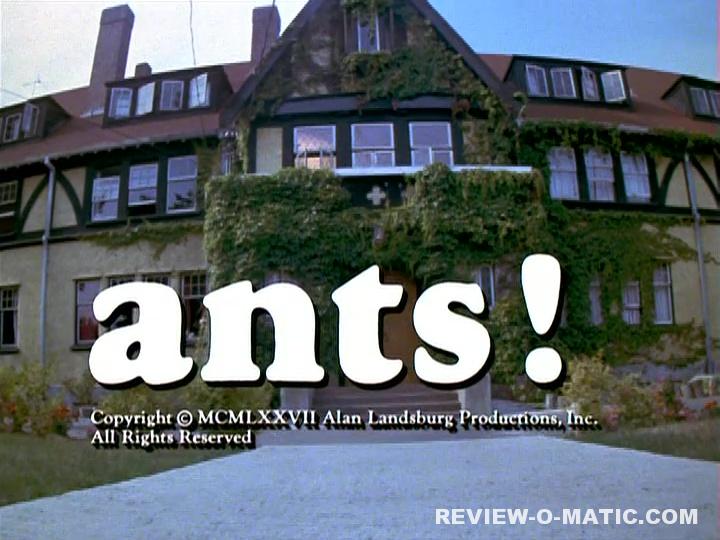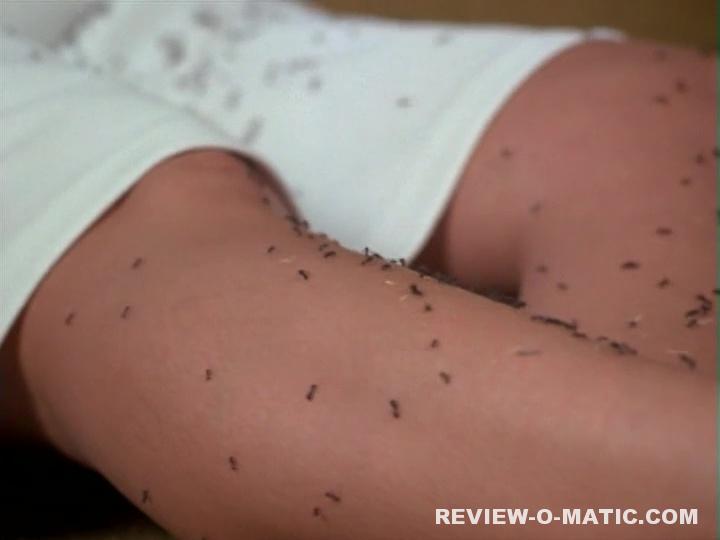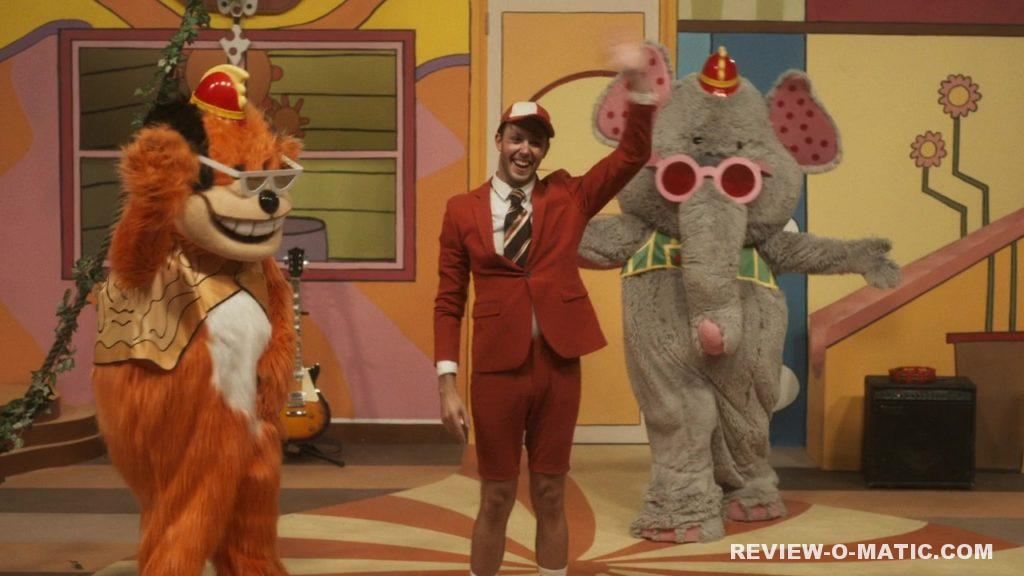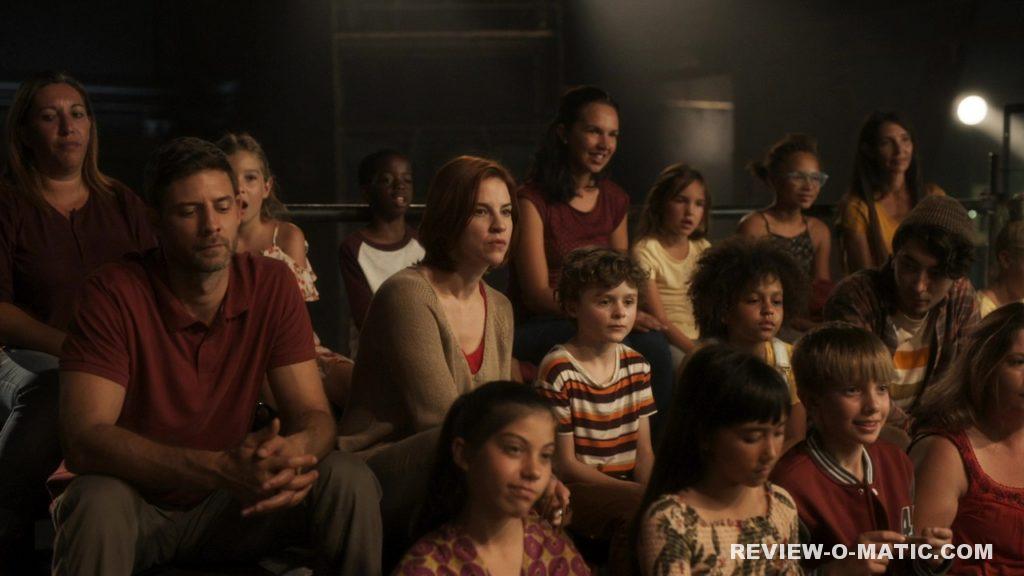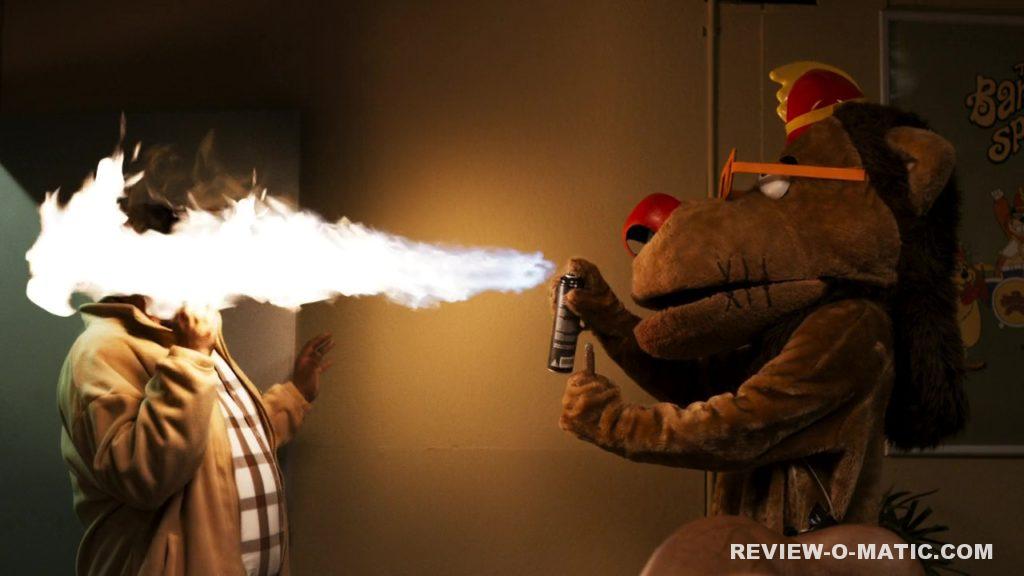Frankenstein 1970 (1958)
October 9th, 2020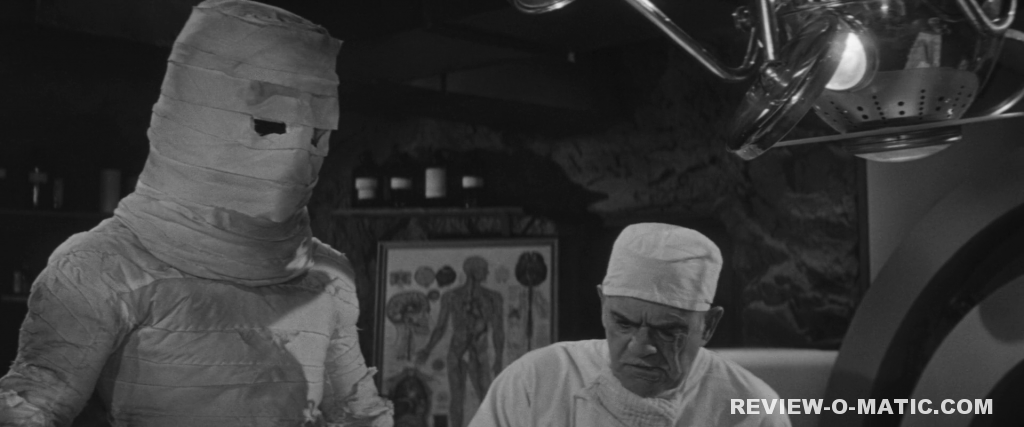
Before I talk about Frankenstein 1970, let me talk about what Frankenstein 1970 is not. For starters, Frankenstein 1970 was not released in 1970; it was made in 1958. And the film doesn’t appear to actually take place in 1970. The sets look like they’re leftover from a haunted house Three Stooges film. Finally, despite starring Boris Karloff, Frankenstein 1970 doesn’t feature anything that looks like Frankenstein’s monster.
It does, however, feature a mummy with a bucket on its head.
Frankenstein 1970 is a sequel to the original Frankenstein of sorts, although the setup is so similar to the original that it could almost be considered a reboot. Baron Frankenstein (Karloff), the last living relative of Dr. Frankenstein, is determined to follow in his family’s footsteps and animate the dead. Unfortunately castle living is expensive, and although he has the vision, he’s missing the funds. Lucky for him, a documentary film crew interested in the Frankenstein legacy arrives and agrees, in exchange for rights to film at the castle, to provide Baron Frankenstein with enough money to buy his own atomic reactor — the irony being that as the film crew wanders around filming the castle, Baron von Frankenstein is in the basement working on his experiment.
Baron, like his ancestor, successfully animates his creation, but accidentally drops the only pair of eyeballs he has on hand. Because of this, his creation spends much of the movie stumbling around with a bucket over his head. Don’t worry; the monster eventually obtains a pair of eyeballs the hard way.
If I had to guess, I’d say the director was banking on two names (Frankenstein and Boris Karloff) to sell this film, and shooting in black and white must have been an attempt to draw comparisons to the original. Unfortunately, Karloff plays Frankenstein (Baron, not the monster) a little too lightly. His performance is all over the place, and his menacing presence as the monster is sorely missed here (a guy hidden by bandages and a bucket is no replacement). Perhaps the most confusing part of the film is Frankenstein’s motivation. We never learn why he wants to animate a corpse, or what his plans are if he succeeds.
Between the atomic reactor and a lethal radiation cloud, Frankenstein 1970 is unmistakably a film of the 1950s, when such topics were popular. As a whole the film isn’t terrible and there are some interesting ideas, even if they aren’t fully fleshed out. That being said, if you haven’t watched the original in a while, watch that instead.
